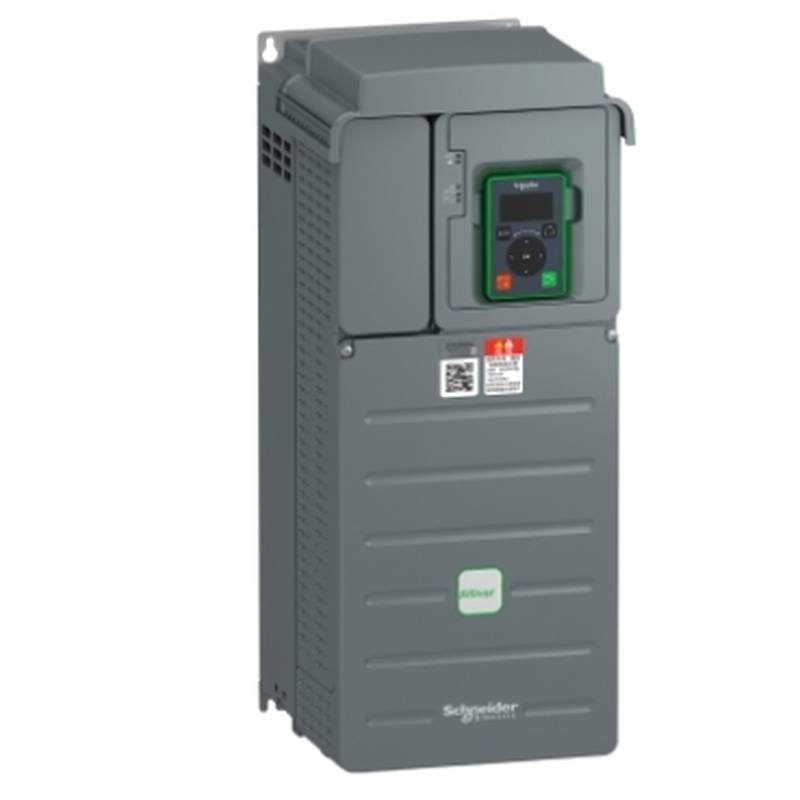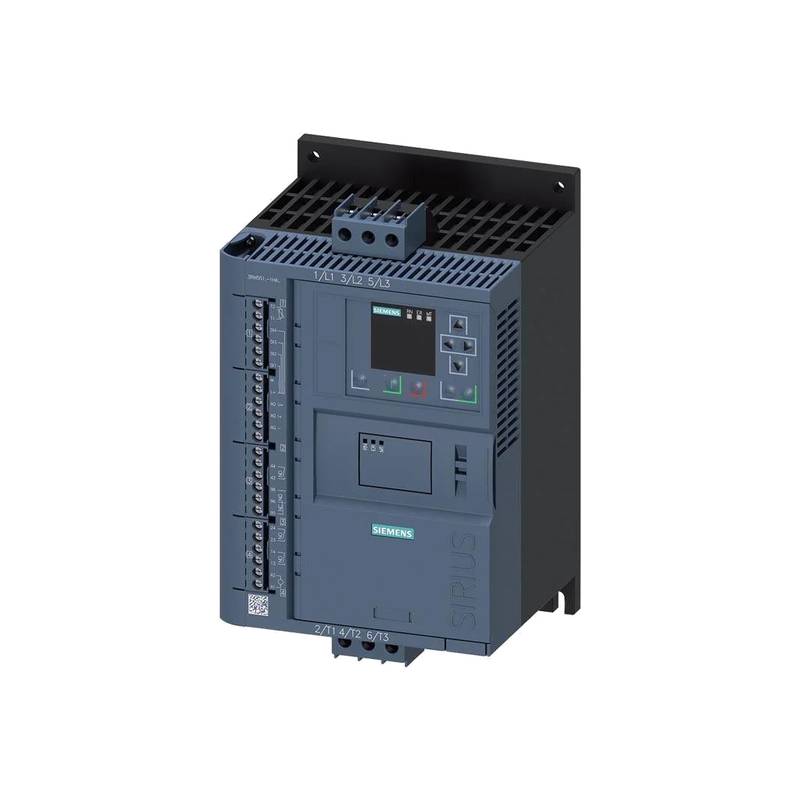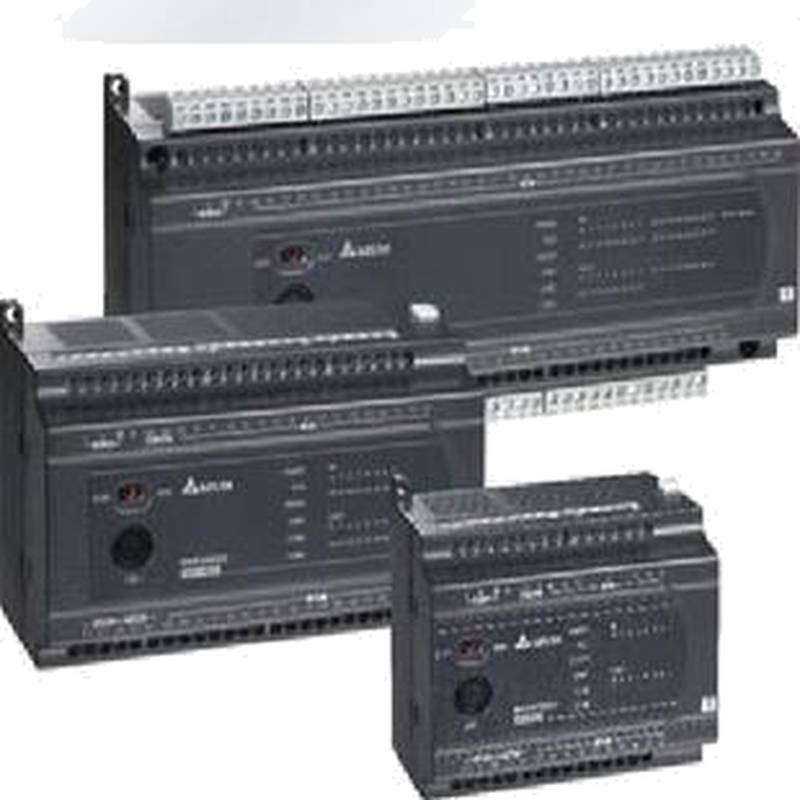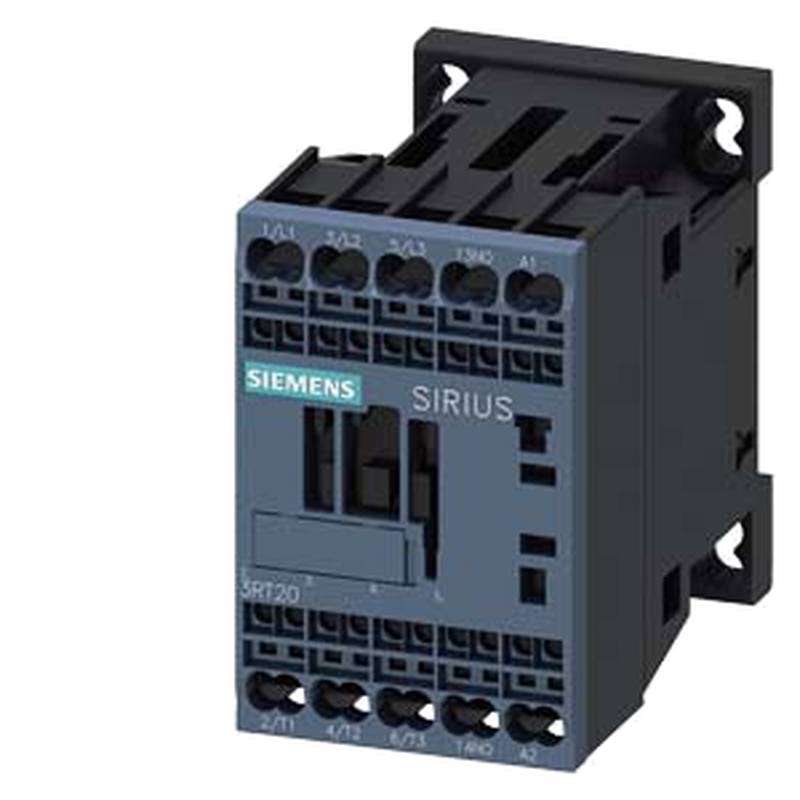
The Siemens 5SU9356-1CN40 RCBO is engineered for robust protection of industrial equipment, offering a 40A current rating, 30mA sensitivity, and a single-pole plus neutral configuration. This advanced Residual Current Circuit Breaker with Overcurrent protection combines essential safety functions into a single, reliable unit, significantly reducing installation complexity and space requirements within control panels. Its rapid tripping mechanism safeguards sensitive machinery from overloads, short circuits, and dangerous earth leakage currents, ensuring operational continuity and personnel safety in demanding industrial environments.
Product Specifications
| Feature | Specification |
| :-------------------------- | :--------------------------------------------- |
| Product Type | RCBO (Residual Current Circuit Breaker with Overcurrent protection) |
| Manufacturer | Siemens |
| Model Number | 5SU9356-1CN40 |
| Rated Current (In) | 40A |
| Rated Residual Current (IΔn)| 30mA |
| Number of Poles | 1P+N (Single Pole + Neutral) |
| Tripping Curve | C Curve |
| Breaking Capacity (Icn) | 6kA |
| Voltage Rating | 230/400V AC |
| Frequency | 50/60 Hz |
| Terminal Type | Screw Terminals |
| Mounting Type | DIN Rail |
| Protection Type | Overcurrent, Short Circuit, Earth Leakage |
Core Features & Market Positioning
The Siemens 5SU9356-1CN40 RCBO distinguishes itself through its integrated design, consolidating the functions of a miniature circuit breaker (MCB) and a residual current device (RCD) into one compact unit. This dual functionality is crucial for modern industrial electrical systems where space within distribution boards is at a premium. The C-curve characteristic ensures that the device can handle moderate inrush currents typical of inductive loads, such as motors and transformers, without nuisance tripping, while still providing swift protection against short circuits. Its 30mA residual current sensitivity is the standard for personal protection against electric shock, making it an indispensable component for safety compliance in industrial settings. Siemens' reputation for quality and reliability further solidifies the 5SU9356-1CN40's position as a preferred choice for engineers demanding dependable circuit protection.
Key Application Scenarios
This Siemens RCBO is ideally suited for protecting individual circuits powering machinery, pumps, HVAC systems, and control panels in factories, manufacturing plants, and process industries. Its primary role is to safeguard sensitive electronic components and motors from damage caused by overloads, short circuits, and electrical faults. It is also a critical component for ensuring compliance with electrical safety regulations, particularly in areas where personnel may come into contact with electrical equipment, such as workshops and assembly lines. The 40A rating makes it suitable for medium to high-power circuits common in industrial applications.
Practical System Integration Guidance
Integrating the Siemens 5SU9356-1CN40 RCBO into an industrial electrical system is straightforward due to its DIN rail mounting capability and standard terminal connections. Ensure the incoming live and neutral conductors are connected to the line-side terminals, and the outgoing load conductors are connected to the load-side terminals, observing correct polarity. The neutral conductor must pass through the RCBO for it to function correctly. Proper grounding of the downstream equipment to the system earth is essential for the residual current detection mechanism to operate effectively in the event of a fault. Before energizing the circuit, it is recommended to perform a manual test of the RCBO using its integrated test button to verify the tripping function.
Operation and Risk Mitigation
The Siemens 5SU9356-1CN40 RCBO operates by continuously monitoring the balance of current flowing through the live and neutral conductors. If an imbalance exceeding 30mA occurs, indicative of current leaking to earth (potentially through a person), the device rapidly interrupts the circuit within milliseconds, preventing electrocution or severe equipment damage. Overcurrent and short-circuit protection are provided by the thermal and magnetic trip elements, respectively. Regular testing with the integrated test button is crucial to ensure the residual current detection mechanism remains functional. Failure to trip during a test indicates a potential fault within the device or the protective earth system, necessitating immediate investigation and rectification.
Scalability & Long-Term Value
The modular design of Siemens' industrial circuit protection components, including the 5SU9356-1CN40 RCBO, allows for straightforward expansion and modification of electrical distribution systems. It seamlessly integrates with other Siemens SIVACON or ALPHA devices, ensuring compatibility within a unified electrical infrastructure. This backward and forward compatibility simplifies future upgrades or the addition of new circuits without requiring a complete system overhaul. For facilities embracing Industry 4.0 principles, such robust and standardized protection devices form the foundational layer for smart factory integration, enabling reliable operation of automated processes and facilitating data acquisition for predictive maintenance when combined with appropriate monitoring systems.
FAQs
What is the primary function of the Siemens 5SU9356-1CN40 RCBO?
This device provides combined protection against overcurrents, short circuits, and earth leakage faults. It acts as both a circuit breaker and a residual current device in a single unit.
It is designed to protect industrial equipment and personnel from electrical hazards. The 40A rating suits medium to high-power industrial circuits.
The 30mA sensitivity is critical for personal safety, interrupting power rapidly during ground faults. It ensures compliance with electrical safety standards.
How does the C-curve tripping characteristic benefit industrial applications?
The C-curve is designed to handle moderate inrush currents typical of inductive loads. This includes motors, transformers, and fluorescent lighting systems.
It prevents nuisance tripping when equipment starts up or experiences temporary overloads. This ensures stable operation of machinery.
While allowing for inrush, the C-curve still offers rapid protection against short-circuit currents, safeguarding the system.
What are the key advantages of using an RCBO over separate MCB and RCD units?
An RCBO offers significant space savings in electrical enclosures. Combining two devices into one reduces panel size and complexity.
Installation is simplified and faster, as there is less wiring to manage. This can lead to reduced labor costs during setup.
It ensures that overcurrent and earth leakage protection are always coordinated and correctly wired together. This enhances overall system safety and reliability.
Can the Siemens 5SU9356-1CN40 be used for residential electrical protection?
While it offers excellent protection, it is specifically designed and marketed for industrial applications. Residential needs often differ in terms of required breaking capacity and specific approvals.
For residential use, Siemens offers specific RCDs and MCBs tailored to household electrical systems and regulations. It's best to use products designated for the specific environment.
However, its core protective functions (overcurrent, short circuit, earth leakage) are fundamental safety features applicable across various settings if specifications match requirements.
What is the breaking capacity (Icn) of the 5SU9356-1CN40, and why is it important?
The breaking capacity (Icn) of this RCBO is 6kA. This indicates the maximum fault current it can safely interrupt without sustaining damage.
This 6kA rating is suitable for many industrial distribution circuits where fault levels are typically managed. It's crucial to ensure this rating exceeds the potential prospective fault current at the point of installation.
Selecting an RCBO with an adequate breaking capacity is vital for preventing catastrophic failure during a short circuit, which could lead to fires or explosions.
What is the significance of the 30mA residual current rating?
A 30mA residual current rating is the standard for personal protection against electric shock. It means the device will trip when it detects a leakage current of 30 milliamperes or more.
This sensitivity allows the RCBO to react quickly enough to prevent serious injury or fatality if a person becomes part of an electrical circuit. It's a crucial safety threshold.
This rating is mandated by many electrical codes for circuits supplying power to areas where contact with earth is possible, such as workshops and damp environments.
How do I test the functionality of the Siemens 5SU9356-1CN40 RCBO?
Locate the integrated test button, typically labeled "T" or with a similar symbol, on the front of the device. Ensure the circuit is energized and the RCBO is in the ON position.
Press the test button firmly. The RCBO should immediately trip, disconnecting the power to the downstream circuit. This confirms the RCD function is operational.
If the RCBO does not trip, do not assume the circuit is safe. This indicates a fault, and the device should be replaced immediately and the installation checked.
What are the implications of a "C" curve for this RCBO?
The "C" curve designation refers to the magnetic tripping characteristic for overcurrents. It means the RCBO will trip due to a short circuit when the current is between 5 and 10 times the rated current (40A in this case).
This characteristic provides a compromise, allowing for higher inrush currents commonly found with inductive loads like motors. It prevents unwanted tripping during normal start-up sequences.
However, it still offers rapid protection against severe short-circuit faults, ensuring system safety. It’s a versatile curve for many industrial applications.
Is the Siemens 5SU9356-1CN40 compatible with other Siemens protection devices?
Yes, Siemens RCBOs like the 5SU9356-1CN40 are designed to integrate seamlessly with other components within Siemens' broader electrical distribution systems. This includes MCBs, RCDs, and surge protection devices.
Compatibility ensures that a cohesive and standardized electrical protection strategy can be implemented. This simplifies system design, installation, and future modifications.
Using components from the same manufacturer often guarantees optimal performance and adherence to system-level safety standards.
What are common installation errors to avoid with this RCBO?
Incorrect wiring is a primary concern; ensure line and neutral are connected to the correct terminals on the supply side and load side. Reverse polarity can render the earth leakage protection ineffective.
Failing to connect the neutral conductor through the RCBO will disable its residual current detection capabilities. The neutral must pass through the device for it to sense imbalances.
Overlooking the initial test button function after installation is a common oversight. Always test the RCBO manually after installation to confirm its operational readiness and the integrity of the protection.

























